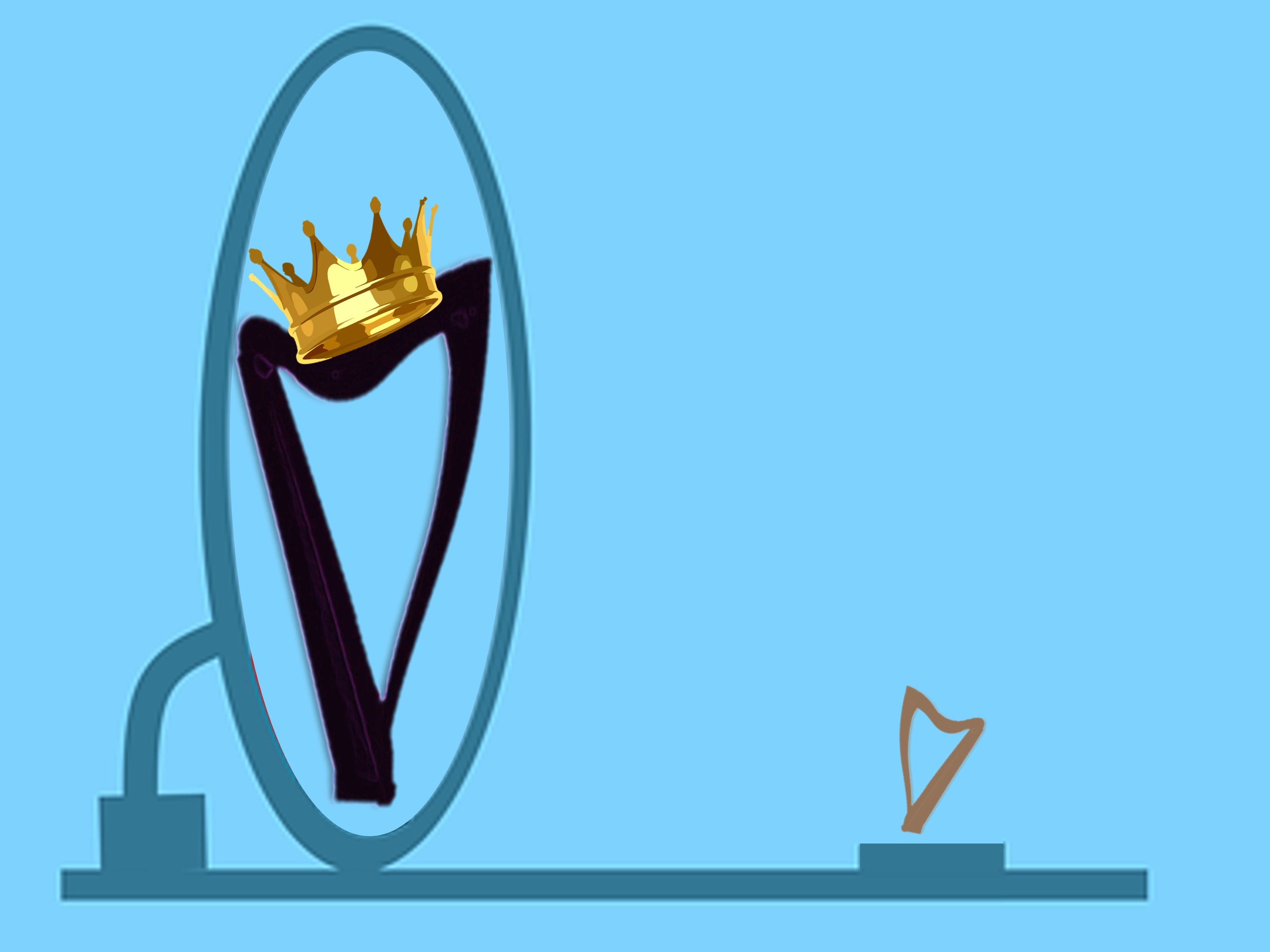Is there any more satisfying feeling than letting out a beautiful harmony?
 When you’re beginning it will be the satisfaction of actually playing the single note – the right note at the right time. Even better if you used the finger you intended and the note that sounded wasn’t a complete surprise! *
When you’re beginning it will be the satisfaction of actually playing the single note – the right note at the right time. Even better if you used the finger you intended and the note that sounded wasn’t a complete surprise! *
As you become more experienced and more practiced, you add more notes to the harmony, but that joy of the sound doesn’t really dim.
And all of that would be great…if there was only one harmony note or chord required. But inevitably, the arranger had other ideas and puts a long succession of harmony notes together.
And that’s when the hitch enters the git-along!
The more surprised and delighted you are by the notes hanging in the air, sparkling and glistening like a goldfish in Fairy Dust, the more likely you will be captivated. And why shouldn’t you be? After all – goldfish! Fairy Dust! Delight! You did good – your handiwork is admirable.
 But that pesky arranger…now you’re expected to do it again. Probably in a different place on the harp. With another finger. And probably at the same time as some melody note! And again. And again. And again. Measure after measure. And then…the repeat!
But that pesky arranger…now you’re expected to do it again. Probably in a different place on the harp. With another finger. And probably at the same time as some melody note! And again. And again. And again. Measure after measure. And then…the repeat!
Are they mad?!
Sadly, bringing the tune out means you have not really got time to admire your handiwork at the same time you are delivering one admirable handiwork after another. So unfair!
One of the mysteries you get to unlock relatively early in your journey is this sublimation and accumulation of little joys for a big burst of delight at the end of the piece.
What? Ok, here’s the translation, sans waxing lyrical –
When you are playing, once you have closed for that note (or chord) –
Move along!
Get where you are going next!
There’s nothing to see here! **
Because there is a next chord and the one after that, etc. ad nauseum.
This needs to be practiced – this moving from one beautifully executed thing to another. Because if you think about playing a tune like it is a puzzle to put together, or a problem to solved, or a recipe to follow – your brain needs to sequence through the information – left hand here, right hand place and play – now left hand, back to right hand, and on again.
As soon as you play the left hand, your brain drops thinking about that harmony and that left hand like a hot potato and rushes on to the next thing (probably a melody note or whatever comes next in the sequence). And it doesn’t think about the left hand again until it must!
All in all, no big deal – you do this all the time. It’s called serial processing. But what’s happened? Well, you played the left hand note (or chord). You’ve closed beautifully (right?). And you left it there hanging over the soundboard. So now, it’s later and time to get to the left hand on again. AND IT’S NOWHERE NEAR WHERE YOU NEED IT!!! Because you left it there, hovering over the sound board, handiwork to be admired.
So, how to fix this? Well – you practice! Practice moving while you have the time, and train your brain to process in a controlled serial fashion.
To start with, SLOW DOWN. Serial processing means you’re dealing with one thing at a time. You might think you’re a multitasker, but nope, it only looks like it. For highly practiced activities you can switch rapidly between them but that’s not multitasking. If you’re not well practiced at moving, you will need additional time to think about it and then make it happen.
LOOK AT THE INTERFACES. This is how I think of the timing – it is the interface between the left hand playing, the right hand playing, the melody, the harmony, and time. Getting all of these to line up is tricky, especially at first. Start by finding where they all touch each other – this is a good place to start.
LOOK FOR THE HOLES. This is where no notes are being played in either hand – this helps form a scaffolding for your thinking and makes a good movement time!
SLOW DOWN. Don’t ask me how I know you’ve already sped up!
MAKE THE SHIFT. As you begin to play, think ahead. Play slowly enough that you can think. Once you’ve placed, you don’t need to think about where your fingers are. And if, as soon as you play, you move to the next place and get your fingers on to the next shape, then you don’t have think about it again until the next time! This is one of the things that more experienced players are better at…. because they have more practice and they have learned to think ahead.
See what we did there? We shifted moving and placing further forward in our thinking sequence rather than letting the notes come at us like a fusillade. But you do need to practice thinking like that. The sequence becomes play –> move –> place –> play –> etc. Lather. Rinse. Repeat.
All of this is predicated on your already having learned the melody enough to being to add the harmony. This is also equally applicable to either hand and to reading or playing by rote. It does take practice. And it is totally worth the time to avoid feeling rushed and unconfident. And once you master this, you can focus on other things that will improve your musicality.
Have you really learned how to move along rather than admiring your handiwork so you can get where you need to be next? Do you have other strategies? Let me know in the comments!
* Sometimes you tell me that you feel like I am speaking directly to you. That’s because…I am! No matter where you are on your journey, the difference between us is likely just time and focus. I was a beginner at one point – an adult who struggled with making time to practice, showing up for lessons embarrassed that I hadn’t had enough practice because I was busy doing other things, but willing to take the lash (which, of course, never came, because I had wonderful, cherishing teachers who gently corrected my technique and repertoire and encouraged me to become the harp player I wanted to be). I thought it would be easier. I love playing my harp. I was afraid of a lot of things – playing in public, music I hadn’t learned yet, embarrassing myself, not getting better, failing – the usual stuff. And I remember it like it was yesterday – because it was (figuratively). I share my thoughts here so that you can learn from my mistakes…and go on to make your own spectacular mistakes that I hope you’ll share with me! We’re all learning – I’m just willing to talk about it! 😉
** We’re talking about the left hand/harmony but this is also applicable and just as important in the right hand/melody.
Comments
3 responses to “Admiring your handiwork”
Excellent lesson in thinking ahead- I’m learning how important it is to plan and practice my moves…what a difference it makes! It’s true when you’re reading music too- so important to practice looking ahead. Thanks Jen.
Thank you! I have problems with this and I didn’t realize it. When I began to video record my tunes, I could actually see the hesitation in my left hand. I was startled to see it was visible. The left hand was sort of floating and unsure where to go next. So I kept practicing and pre-planning my next left-hand jump. Seeing myself play really made a difference.
Isn’t video the best tool ever?! I learn so much from it (and yet, I still resist using it sometimes…go figure!) – I think the best thing you learn is what you are doing. I mentioned that serial processing and if you think of observing your own behavior, it is actually a-n-o-t-h-e-r task you have to add to your already long list of things to do while playing. So the video allows you to focus on the playing while you’re playing and then focus on your movements and behavior separately. This not only convinces you that maybe things aren’t perfect yet, but also allows you to focus on the places that need work. Good for you!